Lūʻau history is steeped in ʻaloha. It is a feast, a celebration, and a connection to the bountiful beauty of Hawaiʻi
Hawaii has a rich culture and history whose vibrancy continues to amaze every person lucky enough to study or visit the Islands. One prevalent example that continues to excite are lūʻaus. Read on to learn more about the lūʻau history and how this tradition remains prevalent and honored today.
Kapu History and the Lūʻau
Kānāwai was the ancient Native Hawaiian legal system that was in place until 1819. Under this system certain things were Kapu, meaning forbidden. There were some prevalent laws of this governing system that made lūʻaus impossible. Such rules imposed restrictions on villagers, not within the ruling class, preventing them from partaking in specific foods and activities. It was also stated that men and women could not eat together. When King Kamehameha II personally removed the restrictive bands of Kapu Law, lūʻaus were introduced as opportunities for everyone to gather together and celebrate.
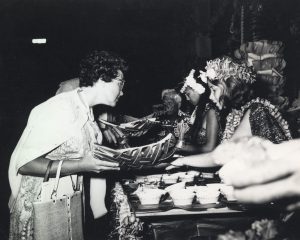
A luau may center around food, but it is the love, care and attention – the aloha – that makes it a celebration
Traditional Lūʻau Food and Table
In earlier times, lūʻau fare was served at low tables decorated with fruits and flowers. You will find that modern lūʻaus are now generally served at long rectangle tables with chairs or benches. The food, however, still includes traditional dishes such as lomi lomi, poi (the root section of the taro plant), and a whole roasted pig that has been cooked in an imu (Hawaiian underground oven). The feast is often accompanied by music and dancing and can last for hours, or even days.
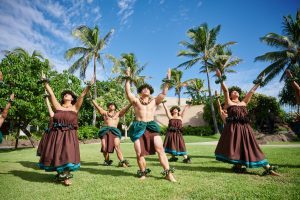
Kahiko hula is a traditional dance that utilizes chants, drums and representational movements to tell a story.
Lūʻau and Its Connection to the Hula
Hula is a beautiful and energetic means of communication; a celebration of history, family and faith. Many legends and historical accounts are passed down through these intricate dances and the accompanying music. Two popular forms of hula are hula kahiko and hula ‘auana.
Hula itself is not just a dance but an entire interpretation of legends, history, feelings and poetic texts. The traditional form is called kahiko, which means “ancient”. This hula style stretches back for centuries and could serve religious, historical or even educational purposes. This form generally includes a mele (a song or chant) and traditional instruments.
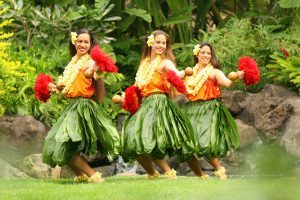
The beautiful ‘Auana style of hula is a joyous presentation generally accompanied by musical instruments, such as the ukulele or guitar.
‘Auana meaning to wander or drift, is the hula style after Western influence. This hula began as a means to entertain travelers in the 1800’s. It has only grown from there, becoming extremely popular in the early 1900’s as airplanes began to bring larger numbers of tourists to the island’s shores. It incorporated a new form of music that included stringed instruments and English-language lyrics.
There are many styles of hula, but regardless of how it is performed, hula remains a beautiful representation and tribute to the stories that have been passed down through the generations as well as an expression of the beauty that surrounds us here in Hawaiʻi.
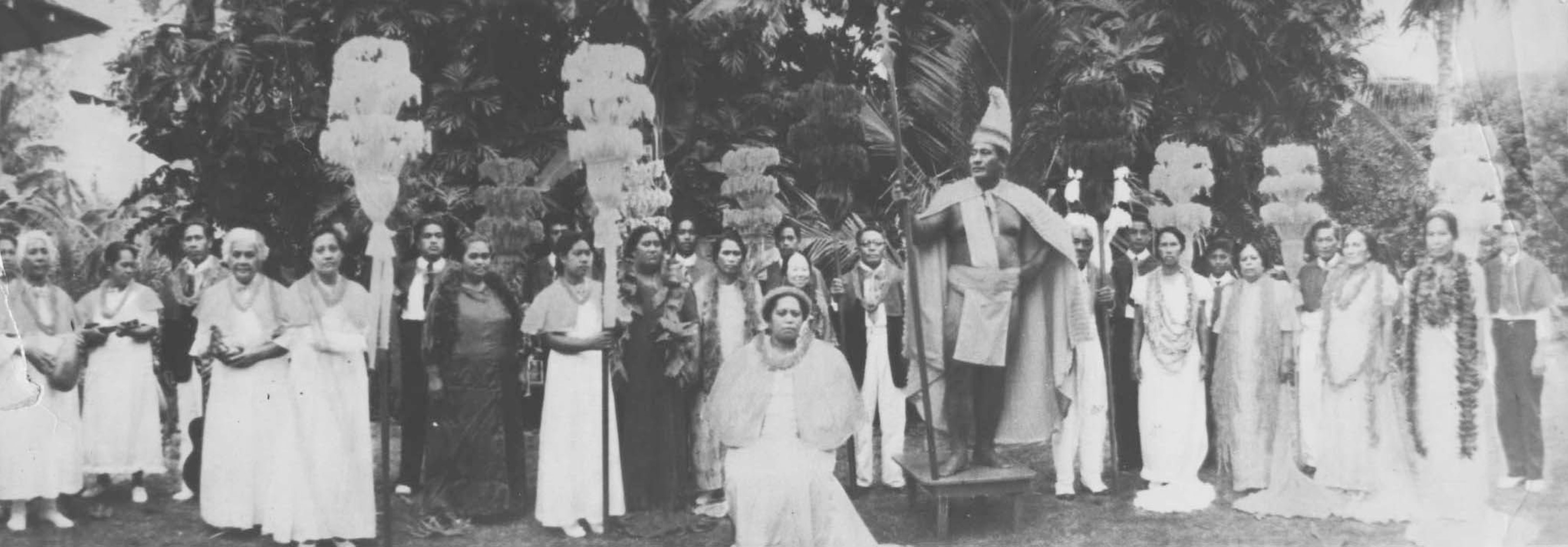
Historical image of Kamana Kalili portraying King Kamehameha with his Royal Court during a lūʻau presented at Laie Bay (Hukilau Beach).
When are Lūʻaus Held?
Nowadays lūʻaus can celebrate birthdays, graduations, and everything in between. They are particularly popular in the celebration of a child’s first birthday and to mark historic events. They are also popular for extended family and community activities. Another popular occasion is for fundraisers. In fact, the roots of the Polynesian Cultural Center began as a means to help local Polynesians to rebuild their community chapel that was destroyed in a fire.
Also popular are the many commercial lūʻaus. These can be presented in an open, casual atmosphere such as on a beachfront, within hotel facilities, and on grassed areas. Though some aspects have changed over time, the beautiful performances, delicious food, and joyous feelings of togetherness remain.
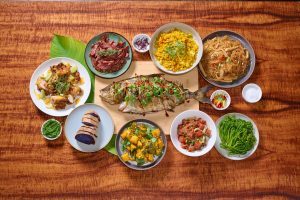
The feast prepared for the Ali’i Lūʻau is based off of traditional dishes and features fresh island ingredients.
The ʻAʻliʻ Lūʻau at the Polynesian Cultural Center
For guests looking for a culturally rich lūʻau experience focused on traditional foods, entertainment, and history, the ʻAʻliʻ Lūʻau at the Polynesian Cultural Center is considered one of the finest on the island. It is also the best value for your travel dollars. We offer a full day of cultural presentations and hands-on activities that culminate in what is frequently described as the best and most authentic lūʻau experience on Oahu. Included is the royal procession, where the Ali’i (royal representatives) welcome their guests, along with live music, an abundant feast including traditionally inspired dishes from Executive Chef Felix Tai, and the presentation of Onipa’a, which highlights traditional dance, songs and history honoring the last reigning monarch of Hawaiʻi, Queen Liliokaulani. Experience this once in a lifetime opportunity, set in a magnificent outdoor setting among waterfalls and native plants. Book your tickets today!

Harley Charlebois
If I’m not traveling you’ll usually find me at my favorite tea shop with a pencil and pad, I’m old school like that. Otherwise, you’ll find me eating, shopping, or hanging with my cat and a good book. I am always looking for new food, experiences, and stories to share.

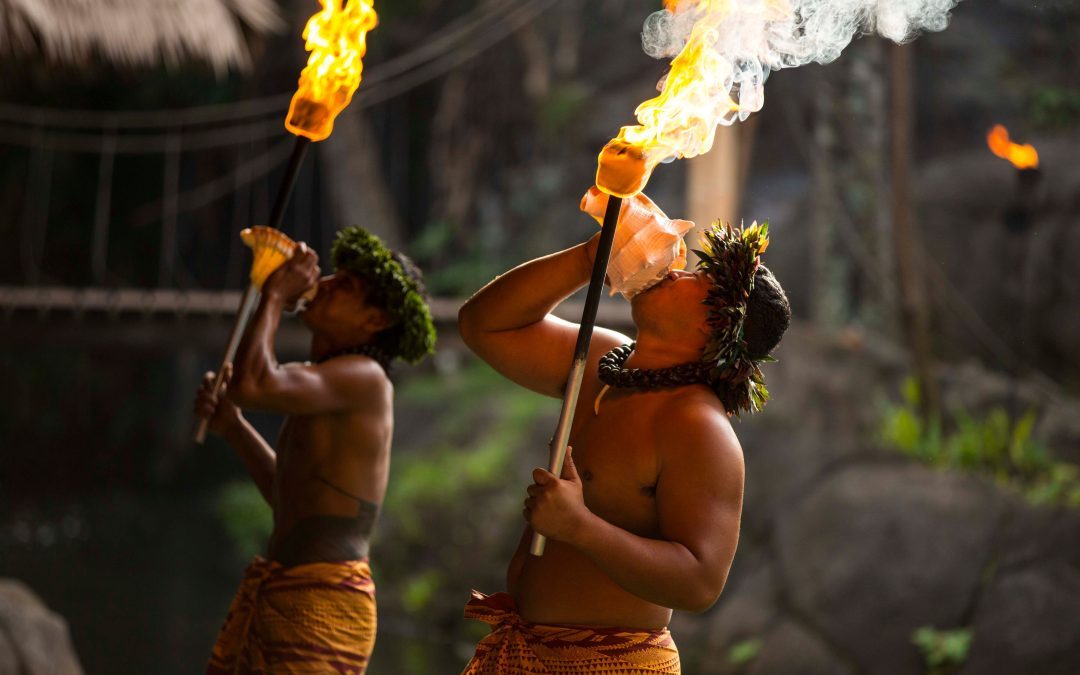
Recent Comments